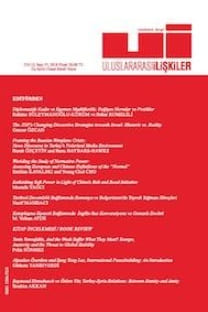Walking a Tightrope: Turkey between the EU and Russia in the Crimea Crisis
Walking a Tightrope: Turkey between the EU and Russia in the Crimea Crisis
The Crimea crisis marked one of the latest critical points in the European Union (EU)-Turkey-Russia triangle. This article analyzes Turkey’s position between the EU and Russia, after the events that unfolded in February 2014, by adopting Holsti’s role theory. Developing a research map through official documents, this article assesses Turkey’s two-sided strategic position, by asking the following question: How did Turkey’s intertwined relationships with the EU and Russia affect its foreign policy formulation in the Crimea crisis? Turkey’s role formulation during the Crimea crisis is defined by empirical data acquired through the official documents of EU institutions and the Turkish and Russian foreign policy ministries. MAXQDA software was utilized to provide a systematic qualitative analysis of the 123 official declarations. This article argues that Turkey’s response to the Crimea crisis was affected by several factors stemming from its asymmetric relationship with Russia, its EU candidate status, and kinship with the Crimean Tatars.
Keywords:
Crimea crisis, Turkey-EU relations, Turkey-Russia relations, Turkish foreign policy role theory,
- ISSN: 1304-7310
- Başlangıç: 2004
- Yayıncı: Uluslararası İlişkiler Konseyi Derneği İktisadi İşletmesi
Sayıdaki Diğer Makaleler
Russia and Turkey: A Roller Coaster Relationship between Securitization and Cooperation
Walking a Tightrope: Turkey between the EU and Russia in the Crimea Crisis
So Similar, Yet So Different: Russia and Turkey in the Western Balkans – The Case of Serbia
Relations with Russia in The Context of Turkey’s Policy in Constructing its ‘Strategic Autonomy’
Orhan GAFARLI, Julia ROKNIFARD
Worst of Friends, Best of Rivals: Agency vs Structure in Turkey-Russia Relations
The Rise of China and its Interplay with the Russian and Turkish Regimes
